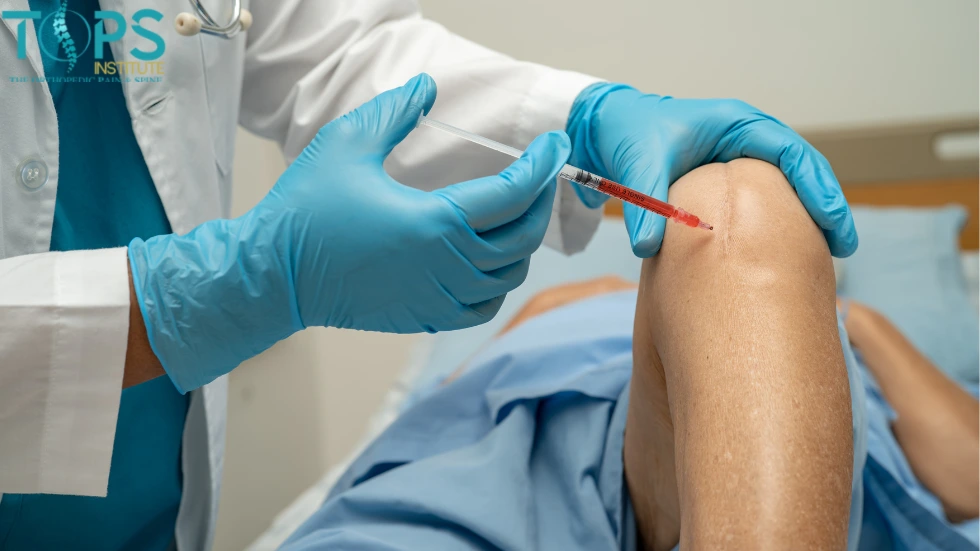Joint pain often starts quietly, a little stiffness in the morning, a dull ache after a long walk. Then one day, the pain lingers. It’s there when you get up, when you sit down, when you try to climb the stairs. Eventually, someone says the word you’ve been hoping to avoid surgery.
That’s when many people start asking about another option, one that helps the body repair itself. In Los Angeles and Beverly Hills, more and more patients are turning to PRP Injections Los Angeles for knee and hip pain before considering surgery.
What PRP Actually Is
PRP stands for platelet-rich plasma.
Its not a medication, chemical or # synthetic material. It’s simply your own blood, prepared in a precise way to harness the body’s natural healing power.
Here’s how it works:
- A small vial of your blood is drawn.
- It’s spun in a centrifuge to separate and concentrate the platelets.
- Platelets release natural growth factors — signaling proteins that play a role in your body’s repair processes. When platelet-rich plasma (PRP) is injected into an area such as the knee, shoulder, or hip, these growth factors are believed to support the body’s natural healing response, potentially reducing inflammation and promoting tissue repair.
You’re not adding anything foreign. You’re just giving your body a reminder to do what it already knows how to do. And aiding it to do it’s job of repairing and healing.
Why Patients Try PRP Before JUMPING TO Surgery
Surgery may be effective, but it comes with risks:
You’re talking about anesthesia, hospital stays, months of recovery, surgical complications/risks, and costs that can stretch higher than expected.
PRP injections are different. It’s performd in a clinic, treatment usually takes under an hour, and most patients walk out and go about their day. There’s little downtime and very little risk. People like that it’s:
- Natural – Uses your own plasma.
- Quick – Start to finish in one visit.
- Low-risk – No cutting, no_ stitches.
- Focused on healing, not just numbing the pain.
If your body can repair itself, wouldn’t you want to try that first?
How PRP Works Inside the Joint
A healthy joint is smooth and quiet; cartilage cushions every movement. When that cushion wears down, the bones start rubbing, inflammation builds, and pain follows.
PRP doesn’t rebuild a joint overnight, but it sends help right to the problem.
Those growth factors:
- Calm inflammation.
- Activates cells that produce collagen and cartilage.
- Improve circulation. Help joints move more freely.
It’s like jump-starting the joint’s natural healing process.
Who Usually Benefits Most
PRP can work well for people who still have some healthy cartilage left; the earlier you catch the damage, the better.
It helps with:
- Early or moderate arthritis.
- Stiff or swollen knees and hips.
- Overuse injuries from sports or daily strain.
- Pain that flares up but hasn’t reached “bone-on-bone.”
For severe arthritis, PRP may not replace surgery, but it can often make life easier and delay the need for surgery. 
What a Session Feels Like
Patients are often surprised by how straightforward it is.
- Blood is drawn.
- The platelets are prepared.
- A doctor injects the PRP directly into the joint, using image guidance (ultrasound or fluoroscopy) for precise delivery.
You might feel a bit of pressure, maybe some warmth, nothing more.
Afterward, rest in the area for a day or two. A little soreness afterward is normal and signals that healing has begun.
Recovery: What to Expect
PRP is a slow medicine. It works gradually
- The first few days can bring light swelling.
- After two or three weeks, stiffness starts to fade.
- By six weeks, most people notice movement is smoother.
- The best improvement often appears around the two-month mark, though sometimes it may take a little longer.
It’s not instant, but it’s steady.Each week, you feel a little more like yourself again.
PRP vs Surgery — A Real-World Comparison
|
PRP Injections |
Surgery |
|
|
Invasiveness |
Needle-based |
Major operation |
|
Recovery |
Days |
Months |
|
Pain level |
Minimal |
Moderate |
|
Risk |
Very low |
Higher |
|
Cost |
Moderate |
High |
|
Approach |
Supports tissue healing |
Replaces damaged tissue |
Surgery replaces what is damaged.
PRP strengthens what you already have.
For many patients, that difference matters.
Why PRP Is Growing in Los Angeles
Los Angeles has quietly become a hub for regenerative medicine.
Clinics like TOPS Institute – Pain Management use advanced imaging to guide every injection, so the PRP lands exactly where it’s needed.
Patients appreciate personal touch, being treated like people, not just cases.
Many describe the experience as simple, almost anticlimactic: “That was it?”
A week or two later, when walking feels easier, the simplicity starts to make sense.
Can PRP Really Stop You From Needing Surgery?
Sometimes it can, sometimes it can’t, that’s the truth. If the joint still has life left in it, PRP can slow down the wear and calm the pain enough that surgery isn’t needed anymore.
If the damage is advanced, it may not prevent surgery entirely, but it can make that path smoother by improving strength and flexibility first. Either way, PRP gives patients more options, and that’s invaluable.
The Bottom Line
Joint pain doesn’t always mean surgery. Medicine has caught up with the body’s own intelligence, and PRP is proof of that. If your knees or hips limit your life, it might be time to talk to a specialist about PRP Injections Los Angeles. It’s simple, safe, and gives your body the chance to do what it’s designed to do — heal.
A Final Thought
Our bodies know more about healing than we sometimes give them credit for.
PRP doesn’t replace that wisdom; it supports it.
Before deciding on surgery, consider giving your own body a chance to repair itself. The results might surprise you.

